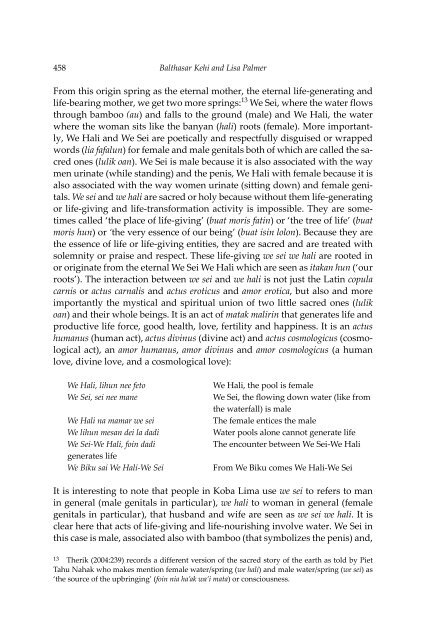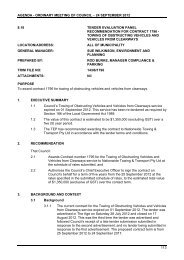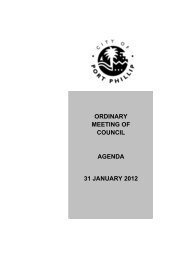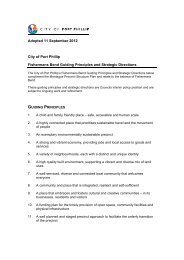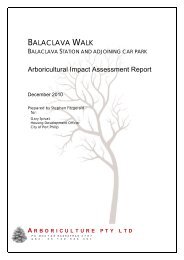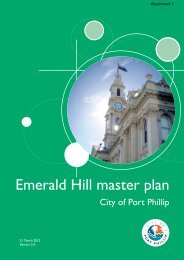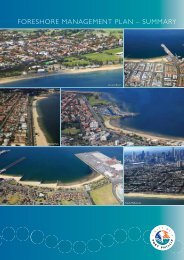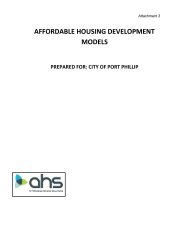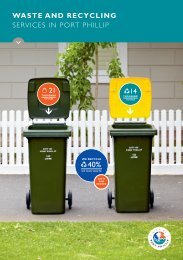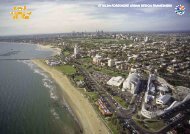Create successful ePaper yourself
Turn your PDF publications into a flip-book with our unique Google optimized e-Paper software.
458<br />
Balthasar <strong>Kehi</strong> <strong>and</strong> Lisa <strong>Palmer</strong><br />
From this origin spring as the eternal mother, the eternal life-generating <strong>and</strong><br />
life-bearing mother, we get two more springs: 13 We Sei, where the water flows<br />
through bamboo (au) <strong>and</strong> falls to the ground (male) <strong>and</strong> We Hali, the water<br />
where the woman sits like the banyan (hali) roots (female). More importantly,<br />
We Hali <strong>and</strong> We Sei are poetically <strong>and</strong> respectfully disguised or wrapped<br />
words (lia fafalun) for female <strong>and</strong> male genitals both <strong>of</strong> which are called the sacred<br />
ones (lulik oan). We Sei is male because it is also associated with the way<br />
men urinate (while st<strong>and</strong>ing) <strong>and</strong> the penis, We Hali with female because it is<br />
also associated with the way women urinate (sitting down) <strong>and</strong> female genitals.<br />
We sei <strong>and</strong> we hali are sacred or holy because without them life-generating<br />
or life-giving <strong>and</strong> life-transformation activity is impossible. They are sometimes<br />
called ‘the place <strong>of</strong> life-giving’ (buat moris fatin) or ‘the tree <strong>of</strong> life’ (buat<br />
moris hun) or ‘the very essence <strong>of</strong> our being’ (buat isin lolon). Because they are<br />
the essence <strong>of</strong> life or life-giving entities, they are sacred <strong>and</strong> are treated with<br />
solemnity or praise <strong>and</strong> respect. These life-giving we sei we hali are rooted in<br />
or originate from the eternal We Sei We Hali which are seen as itakan hun (‘our<br />
roots’). The interaction between we sei <strong>and</strong> we hali is not just the Latin copula<br />
carnis or actus carnalis <strong>and</strong> actus eroticus <strong>and</strong> amor erotica, but also <strong>and</strong> more<br />
importantly the mystical <strong>and</strong> spiritual union <strong>of</strong> two little sacred ones (lulik<br />
oan) <strong>and</strong> their whole beings. It is an act <strong>of</strong> matak malirin that generates life <strong>and</strong><br />
productive life force, good health, love, fertility <strong>and</strong> happiness. It is an actus<br />
humanus (human act), actus divinus (divine act) <strong>and</strong> actus cosmologicus (cosmological<br />
act), an amor humanus, amor divinus <strong>and</strong> amor cosmologicus (a human<br />
love, divine love, <strong>and</strong> a cosmological love):<br />
We Hali, lihun nee feto<br />
We Sei, sei nee mane<br />
We Hali na mamar we sei<br />
We lihun mesan dei la dadi<br />
We Sei-We Hali, foin dadi<br />
generates life<br />
We Biku sai We Hali-We Sei<br />
We Hali, the pool is female<br />
We Sei, the flowing down water (like from<br />
the waterfall) is male<br />
The female entices the male<br />
Water pools alone cannot generate life<br />
The encounter between We Sei-We Hali<br />
From We Biku comes We Hali-We Sei<br />
It is interesting to note that people in Koba Lima use we sei to refers to man<br />
in general (male genitals in particular), we hali to woman in general (female<br />
genitals in particular), that husb<strong>and</strong> <strong>and</strong> wife are seen as we sei we hali. It is<br />
clear here that acts <strong>of</strong> life-giving <strong>and</strong> life-nourishing involve water. We Sei in<br />
this case is male, associated also with bamboo (that symbolizes the penis) <strong>and</strong>,<br />
13 Therik (2004:239) records a different version <strong>of</strong> the sacred story <strong>of</strong> the earth as told by Piet<br />
Tahu Nahak who makes mention female water/spring (we hali) <strong>and</strong> male water/spring (we sei) as<br />
‘the source <strong>of</strong> the upbringing’ (foin nia ha’ak wa’i mata) or consciousness.


